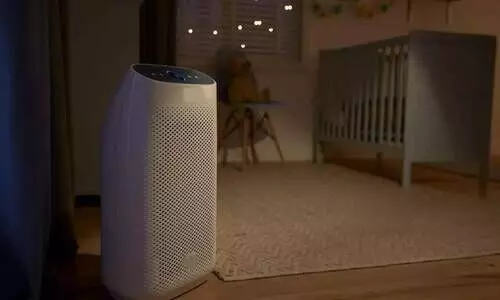Air purifiers are here to stay. It is November and cities and towns, especially in the north of India are beginning to feel the burning, choking sensation that accompanies severe air pollution. And with it comes the spike in the sales of air purifiers.
Every winter, the national capital region of Delhi (NCR Delhi) is engulfed in a thick layer of smog leading to the annual slugfest — stubble burning by farmers in Punjab-Haryana vs emissions by cars in the region.
According to the World Health Organization, household air pollution exposure can lead to serious health conditions such as stroke, heart disease, chronic obstructive pulmonary disease (COPD), and lung cancer.
As per the WHO, household air pollution was responsible for an estimated 3.2 million deaths per year in 2020, including over 237,000 deaths of children under the age of five.
It is no more uncommon to come across residents in NCR Delhi who have installed air purifiers at their homes. These air purifiers have become as important as water filters and RO purifiers installed at urban households of upper class and upper-middle class families.
Also Read: Reduction in Farm Fire Incidents in Punjab & Haryana But Delhi Continues to Choke: Report
According to a study conducted by a Noida-based marketing research firm named Renub India, the sale of air purifiers in India is expected to grow at an annual rate of 28.51 per cent between 2023 and 2030. And, keeping up with the demand, a slew of them are flooding the market.
What is an Air Purifier? How does it work?
An air purifier is an indoor device that traps and filters harmful particles and eventually releases fresh and cleaner air.
There are portable air purifiers which are devices designed to filter the air in a single room, not your whole home. They can be mounted on the wall. Whole-house air purification systems are available, but they are tied into the heating, ventilating, and air conditioning (HVAC) system of a home or facility.
Despite their differences, portable air purifiers generally work the same. They use fans to draw air in through one or more filters, trap various contaminants, and then re-circulate the cleaner air back into the room.
How do air purifiers differ?
Air purifiers vary according to:
- type and number of filters they use
- square footage they cover
- how much air they draw through the filter (expressed in cubic feet per minute)
- how well they collect pollutants from indoor air (expressed as a percentage efficiency rate)
- clean air delivery rate (CADR), or the amount of clean air they deliver
- weight and ease of portability
- what contaminants they target
- the strength of the pollutant source
Types of Air Purifiers
Broadly, air purifiers are one of three types:
- Filtered air purifiers that capture airborne pollutants and trap them in one or more filters.
- Electrostatic air purifiers that create charged particles to trap particles in a filter.
- UV light air purifiers that use UV light against certain contaminants, such as viruses and bacteria.
HEPA Filters
HEPA (high efficiency particulate air) filters can theoretically remove at least 99.97 per cent of any airborne particles. These particles include dust, pollen, mould, and bacteria.
These filters are built with advanced filtration technology. The filter is made of fibres. These filters are placed in the air purification system in a manner that removes smaller particles from the pre-filters. With the help of deep filtering technology, airborne particles are captured through HEPA filters.
“People with respiratory issues or those living in areas with very poor air quality can install air filters. But we need to be practical about how many people can afford them. It is best to check air pollution at the origin and take measures accordingly. Buying air filters doesn’t guarantee that a person will breathe safely,” Satish Gadi, a Gurugram-based physician, who has retired from the Indian Army and has served as the Chief Medical Director of the Indian Railways told Gaon Connection.







